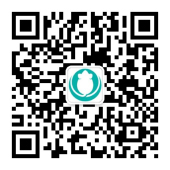
Serum were collected from wild type (WT) mice and homozygous B-hIL17A/hIL17F mice (H/H) stimulated with anti-mCD3ε and anti-mCD28 antibody in vivo, and analyzed by ELISA with species-specific IL17A ELISA kit. Mouse IL17A was detectable in WT mice. Human IL17A was detectable in homozygous B-hIL17A/hIL17F mice (H/H). ND: not detectable.

Naïve CD4+ T cells were sorted from splenocytes of wild type (WT) mice and homozygous B-hIL17A/hIL17F (H/H) mice, and induced into Th17 cells. Th17 cells were stimulated by PMA and lonomycin. The Th17 cells culture supernatants were collected and analyzed by ELISA with species-specific IL17F ELISA kit. Mouse IL17F was detectable in WT mice. Human IL17F was exclusively detectable in homozygous B-hIL17A/hIL17F mice (H/H). ND: not detectable.
Analysis of lymph node T cell subpopulations in B-hIL17A/hIL17F mice


Blood chemistry of B-hIL17A/hIL17F mice


Experimental schedule for induction of psoriasis-like skin lesions in B-hIL17A/hIL17F mice. Mice at 10 week-old of age received a daily topical of commercially available IMQ cream on the shaved back for 6 consecutive days to induce psoriasis-like skin lesions. Control mice were treated similarly with vaseline cream. Severity of skin inflammation was daily scored and back skin was collected at the endpoint. IMQ: imiquimod.

IMQ-induced skin inflammation in B-hIL17A/hIL17F mice phenotypically resembles psoriasis.
Mice (female, 10 week-old, n=5) were scored daily for up to 6 days for body weight and clinical signs of skin inflammation following treatment with imiquimod (IMQ) cream. Mice in each group were treated with different dose of bimekizumab produced in house. Doses are shown in legend. (A) Phenotypical presentation of mouse back skin after 6 days of treatment. (B) Body weight changes during treatment. (C-D) Erythema and scaling score of the back was scored daily on a scale from 0 to 4. Additionally, the cumulative score (erythema plus scaling) is depicted. Values are expressed as mean ± SEM.







 +86-10-56967680
+86-10-56967680 info@bbctg.com.cn
info@bbctg.com.cn